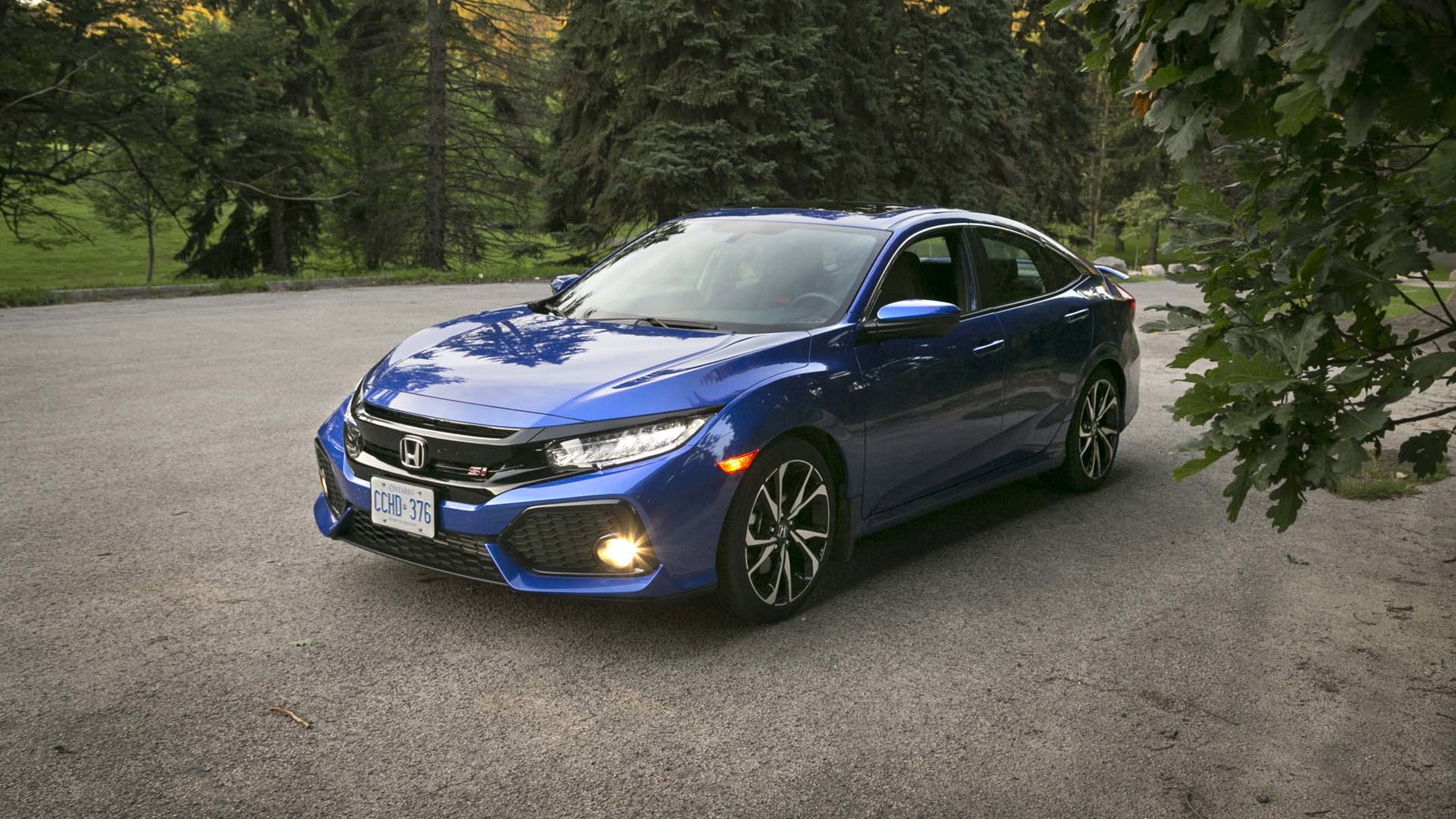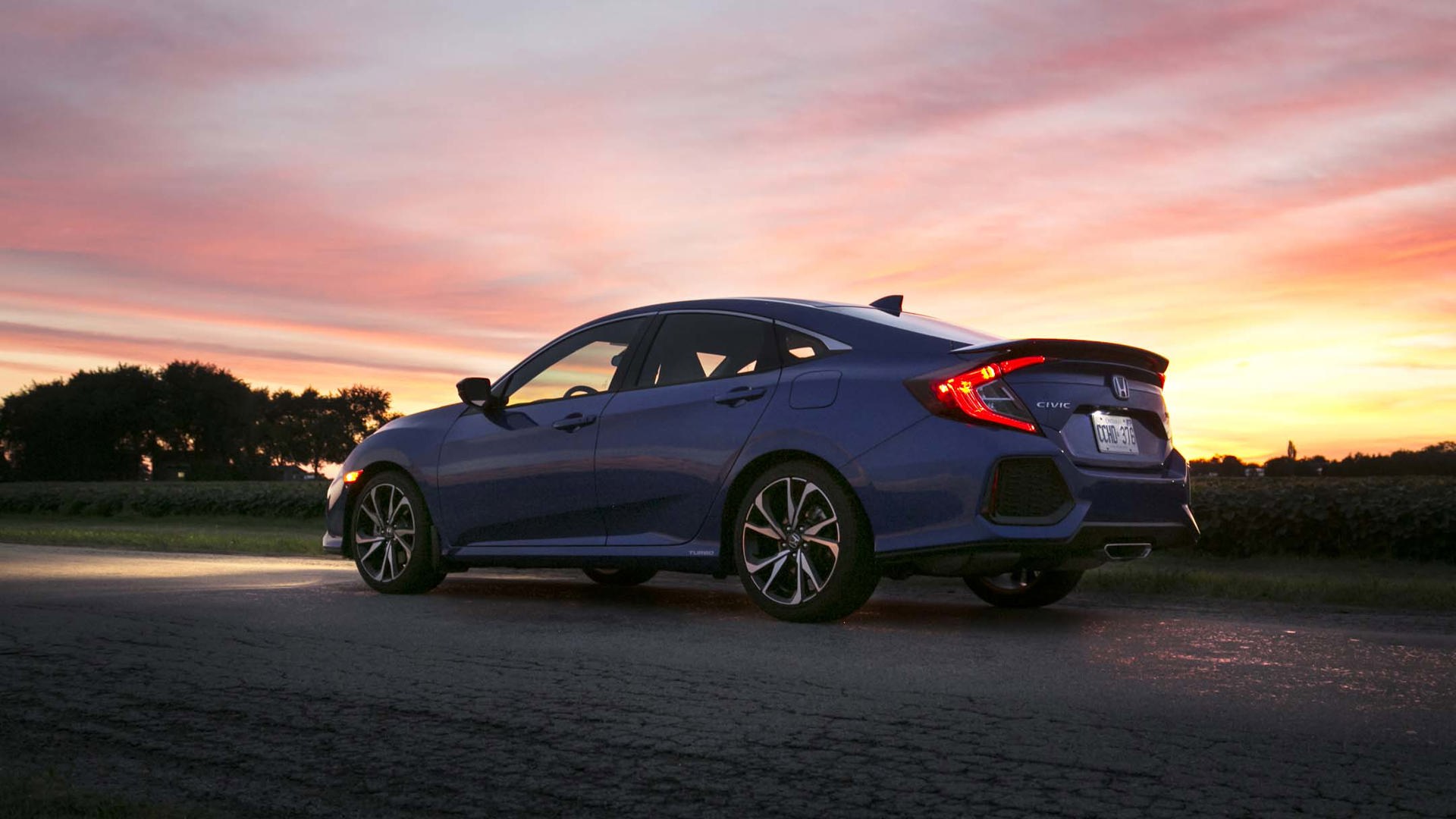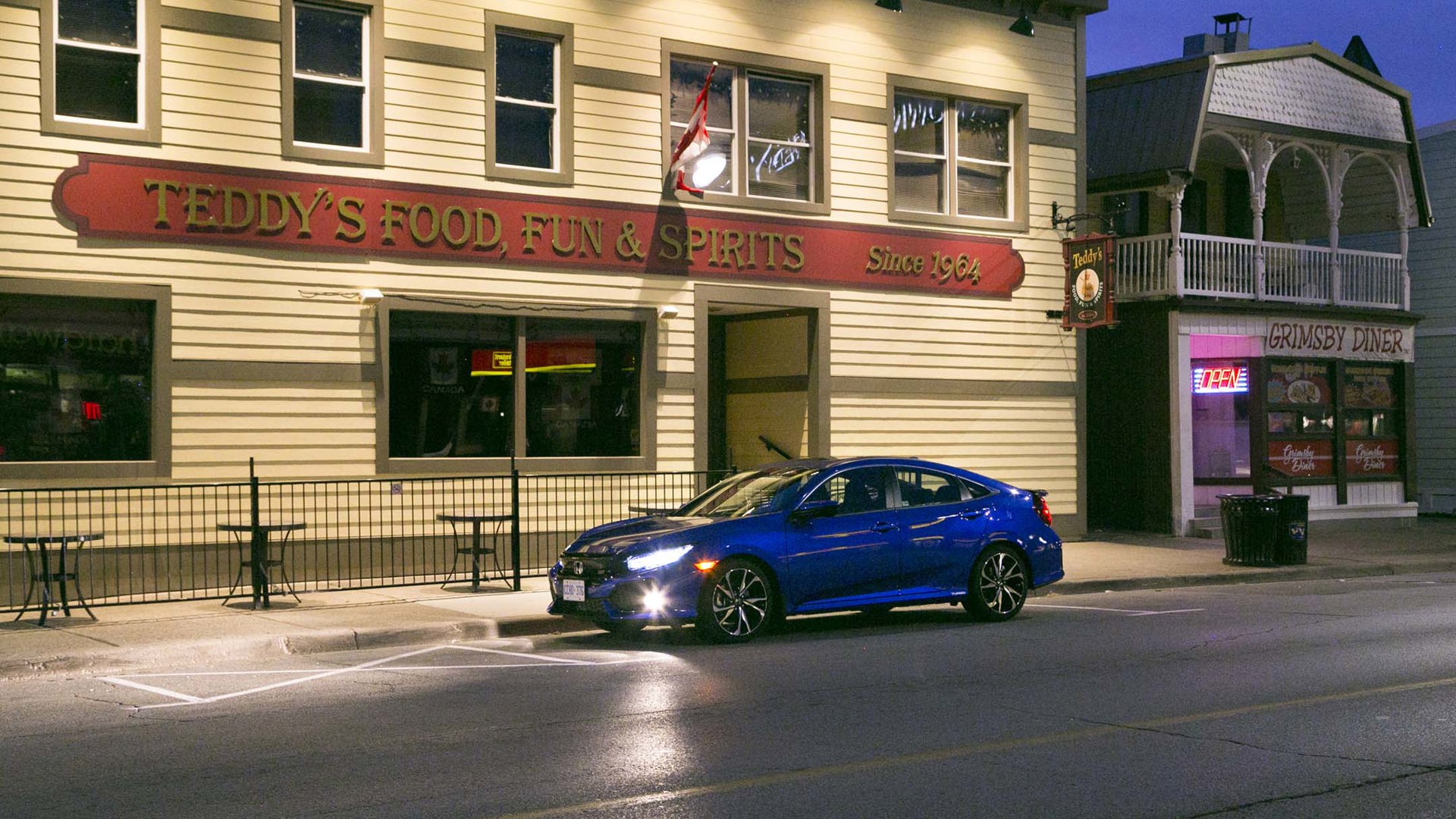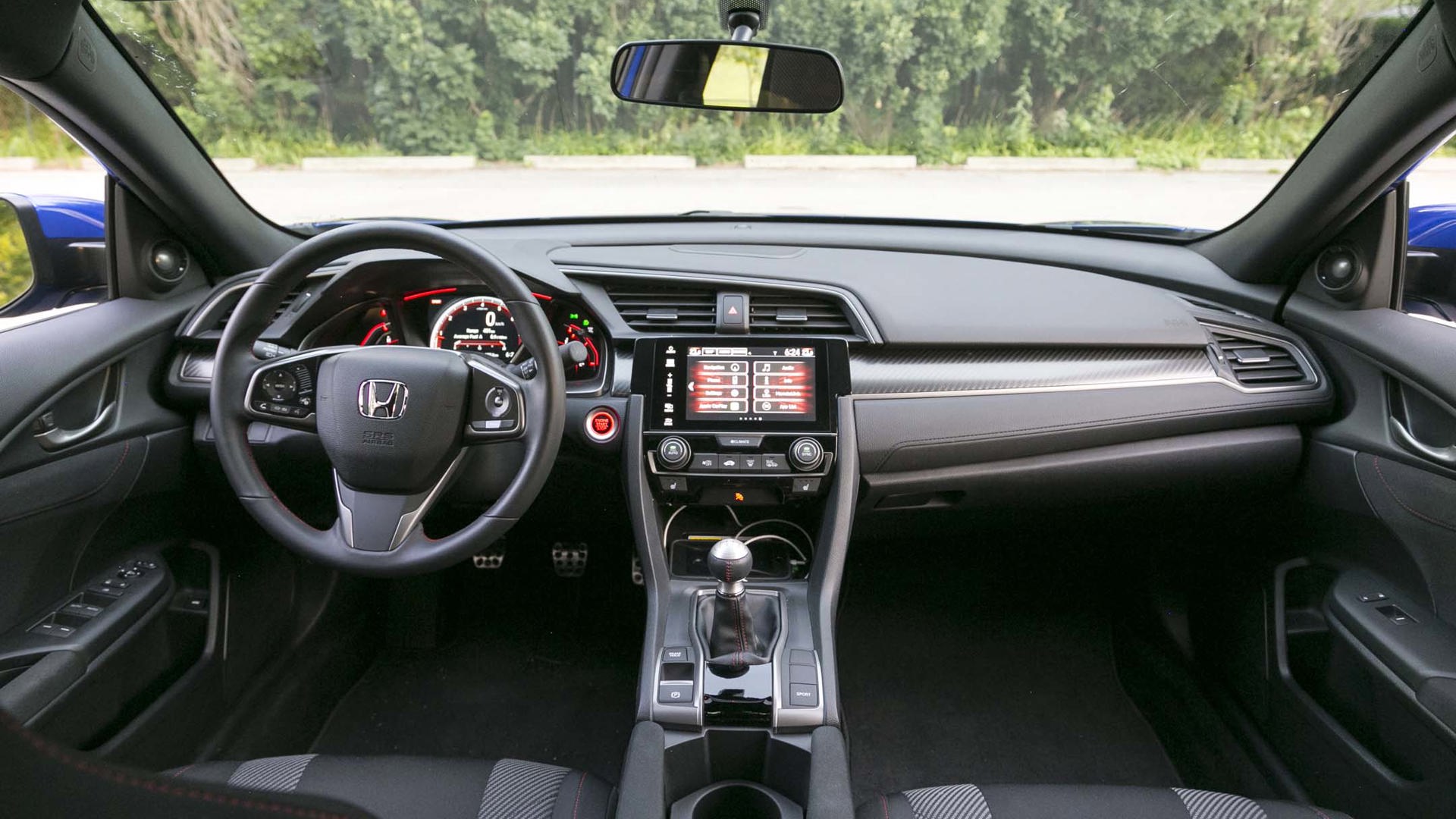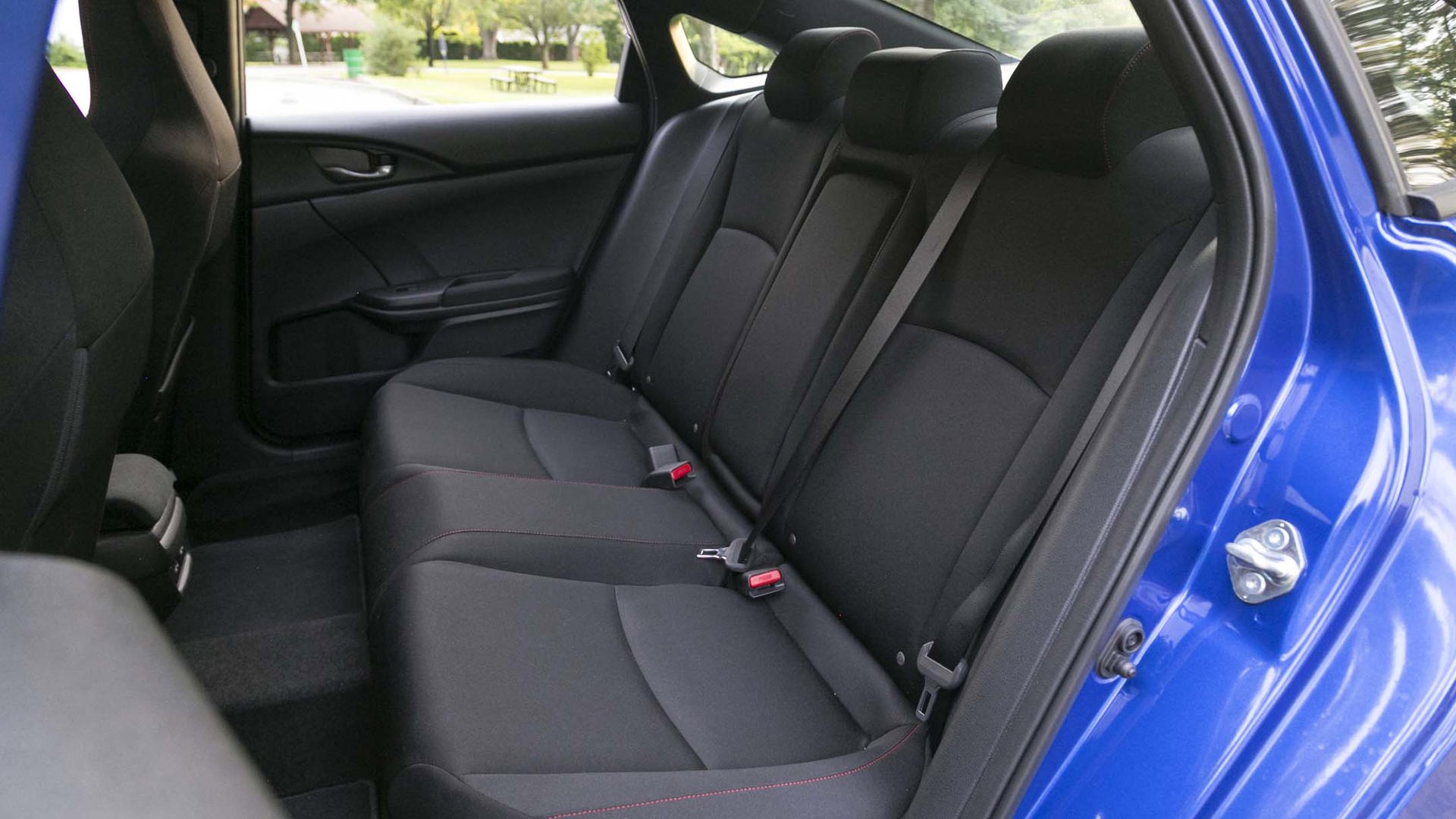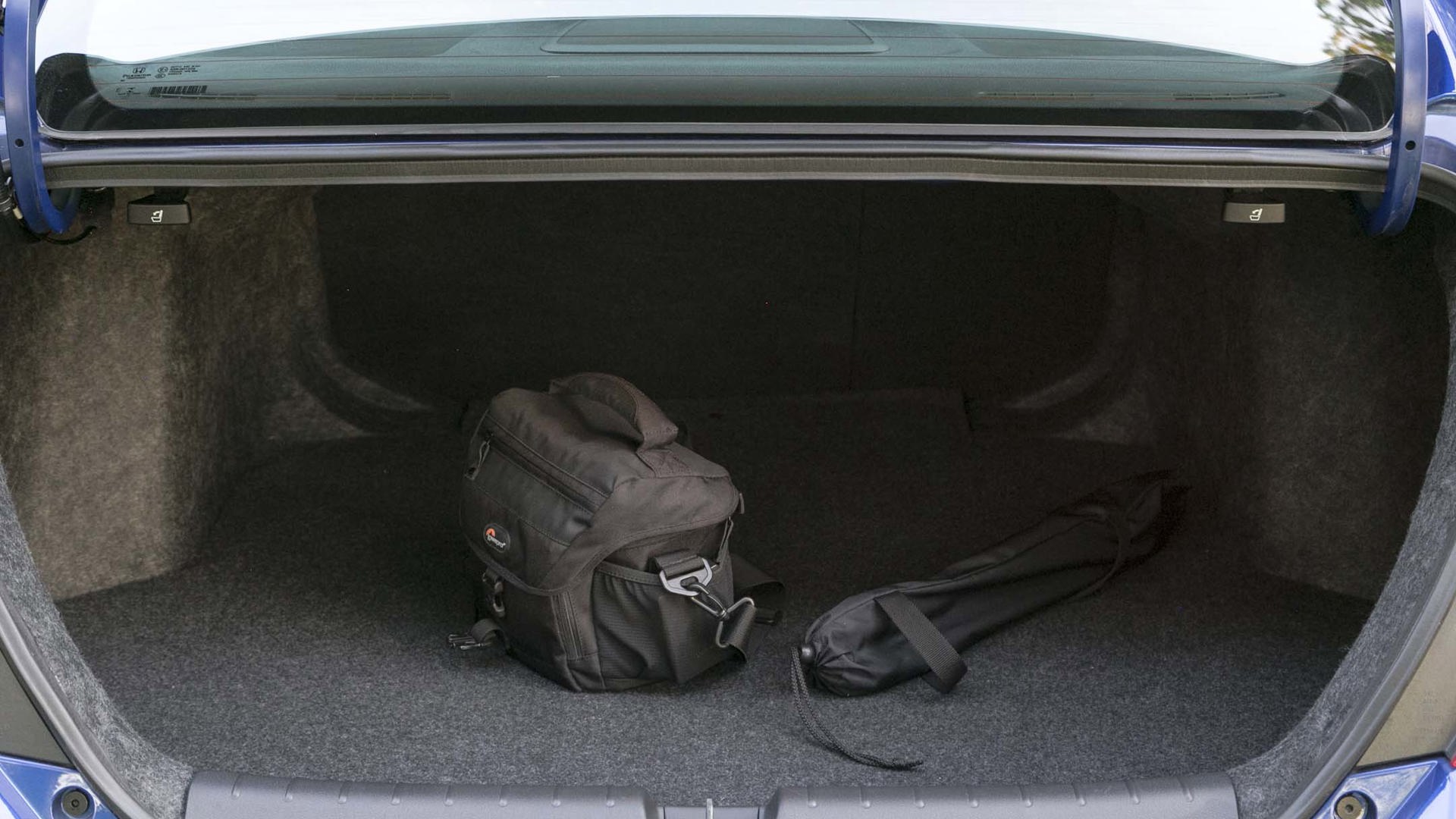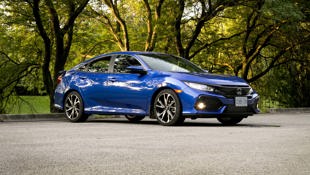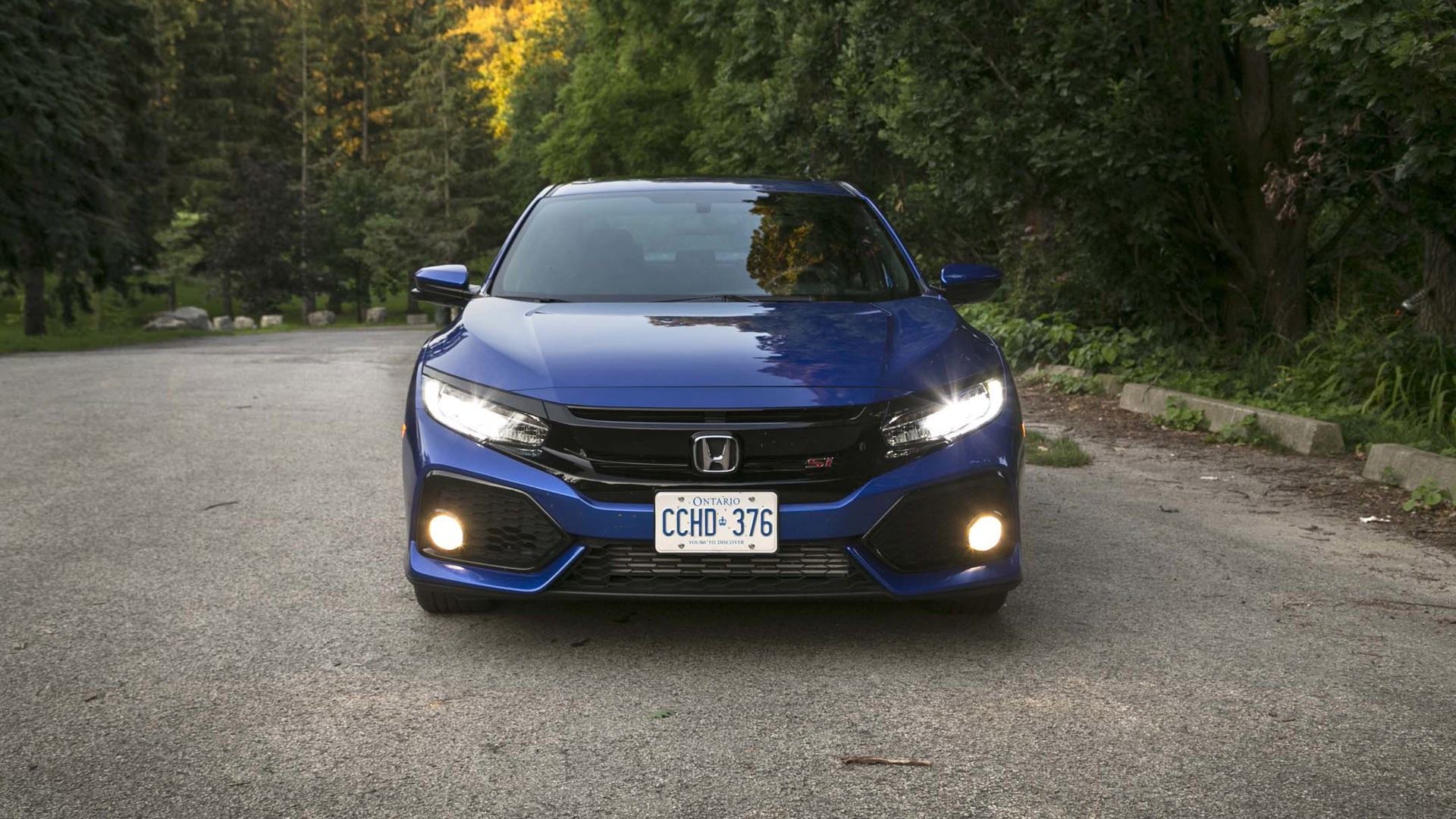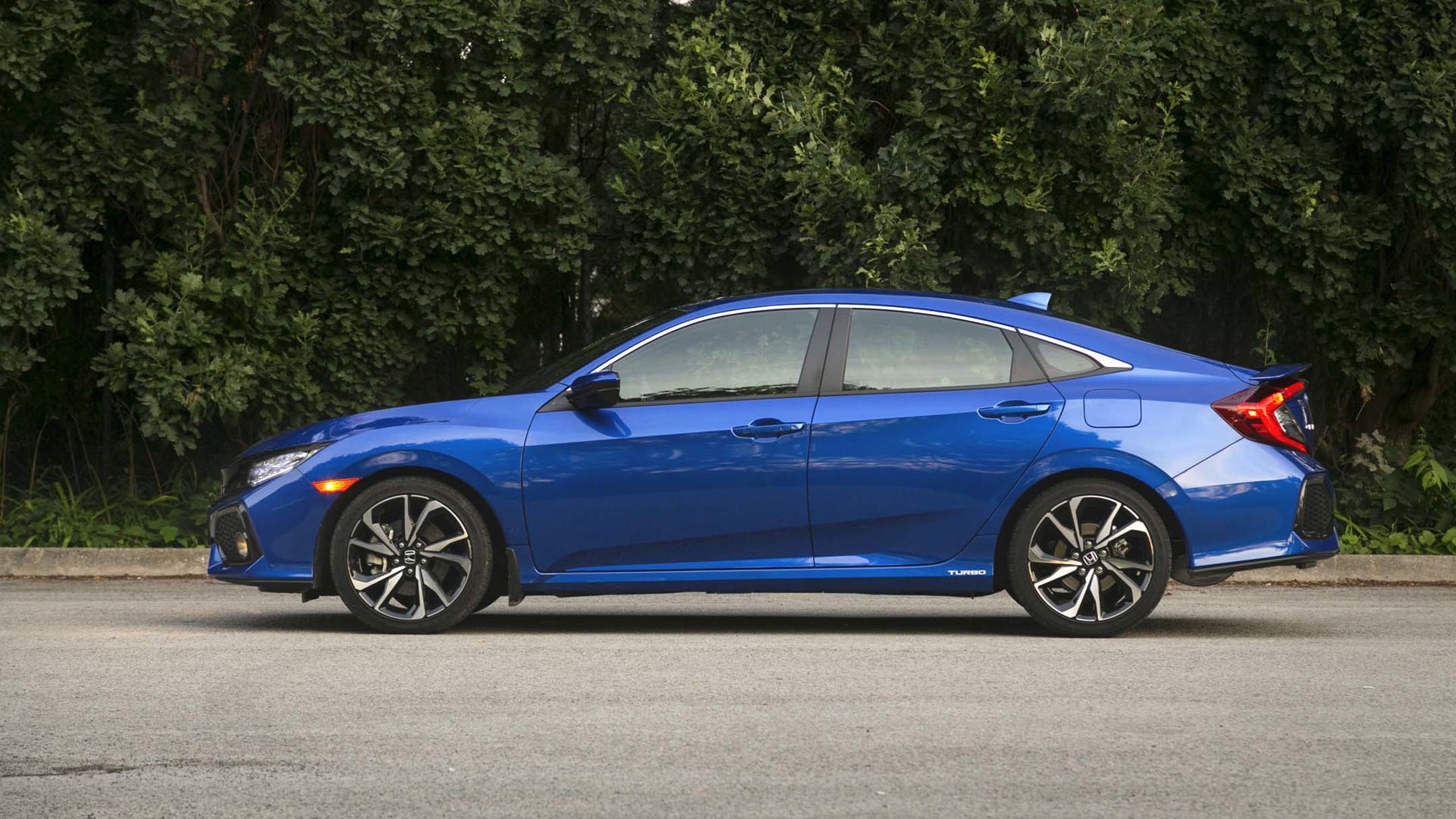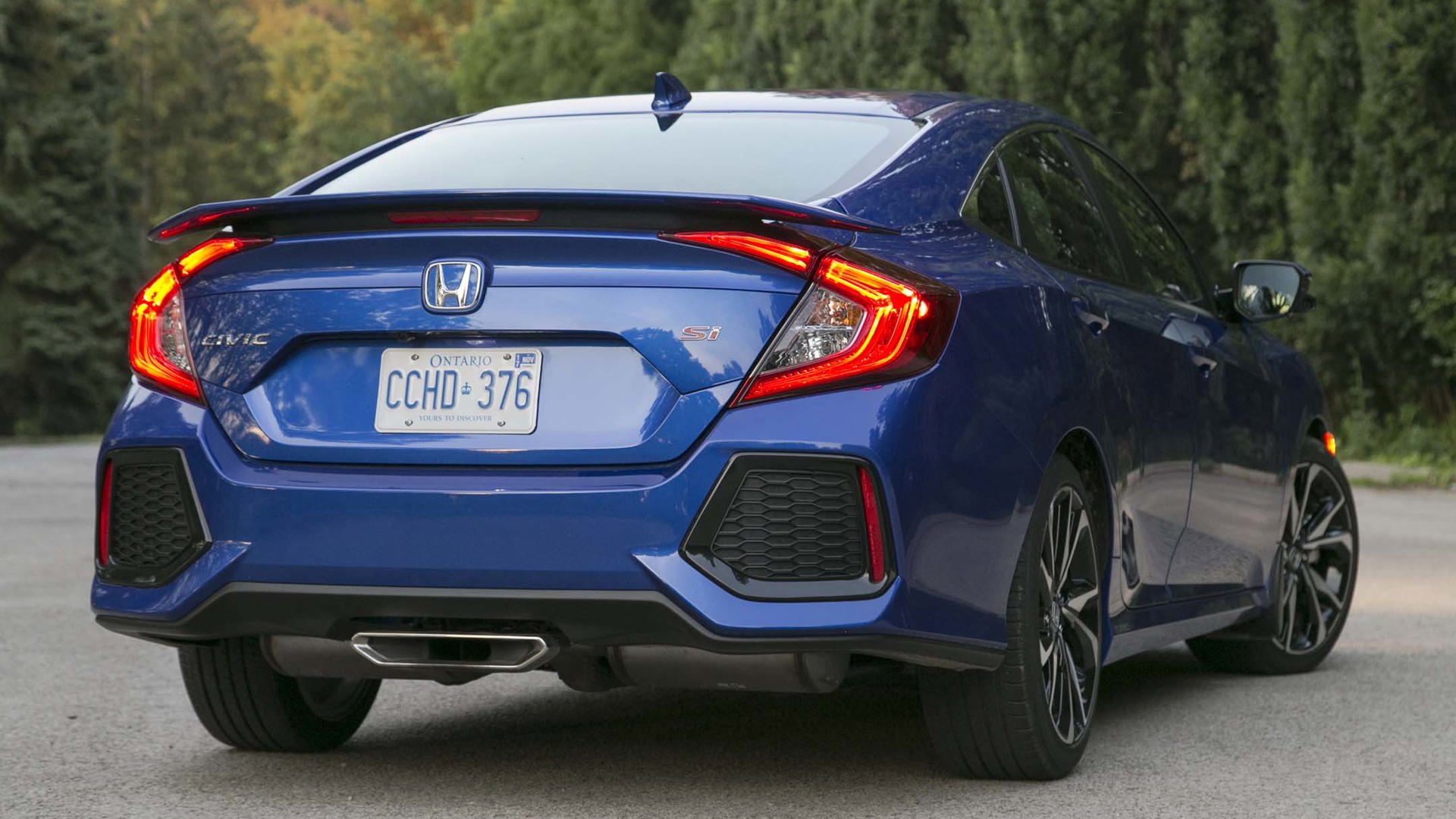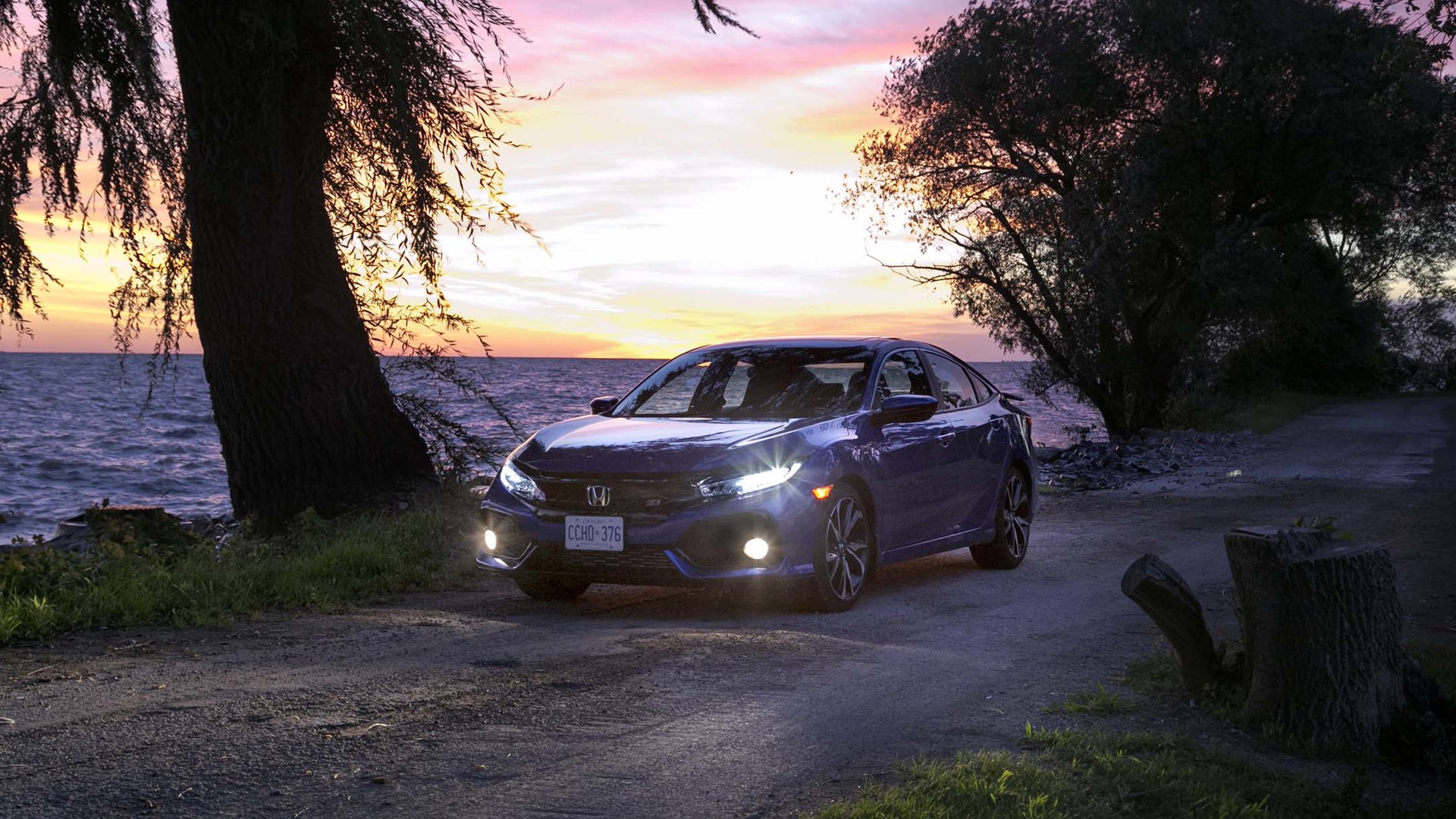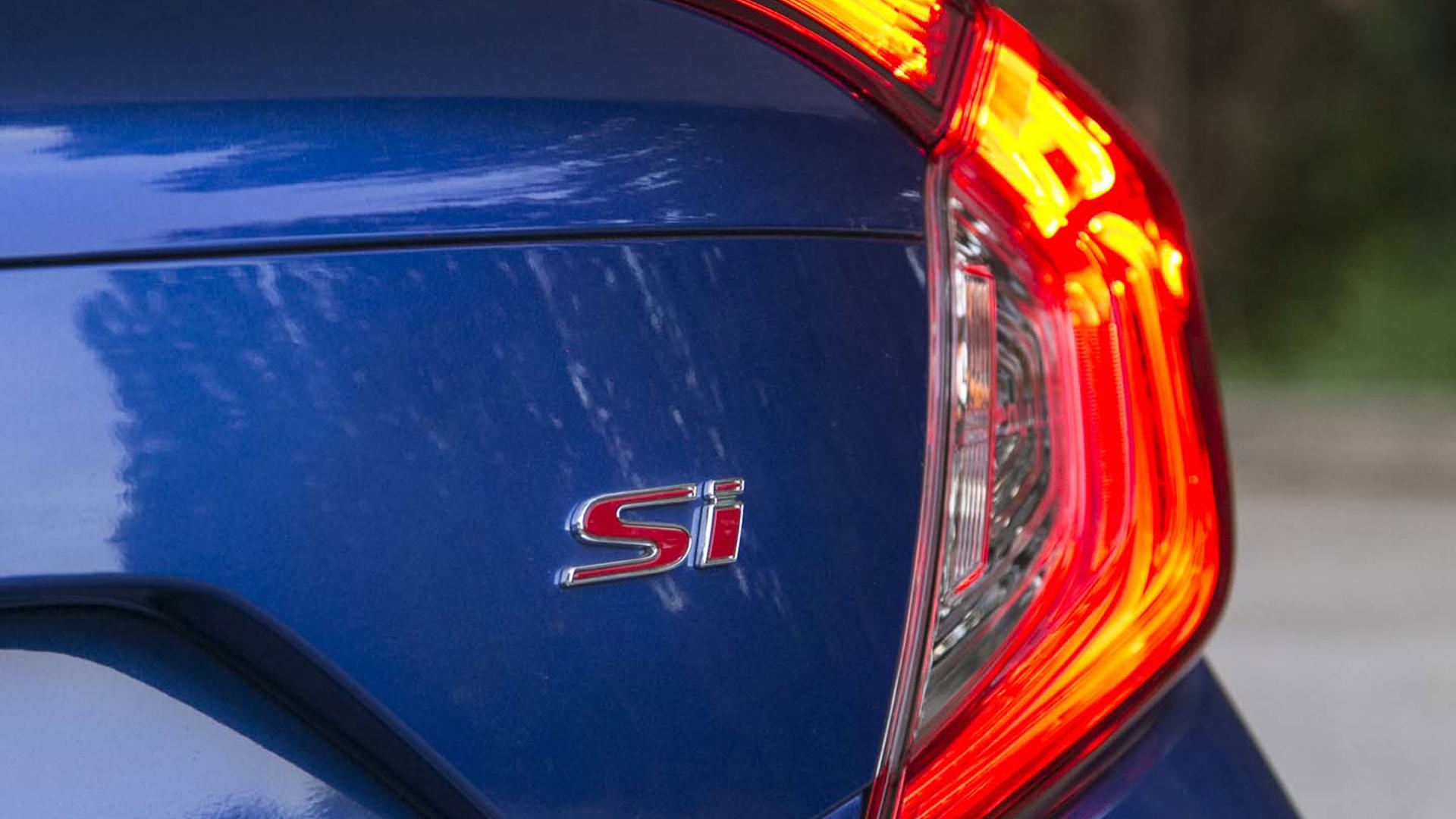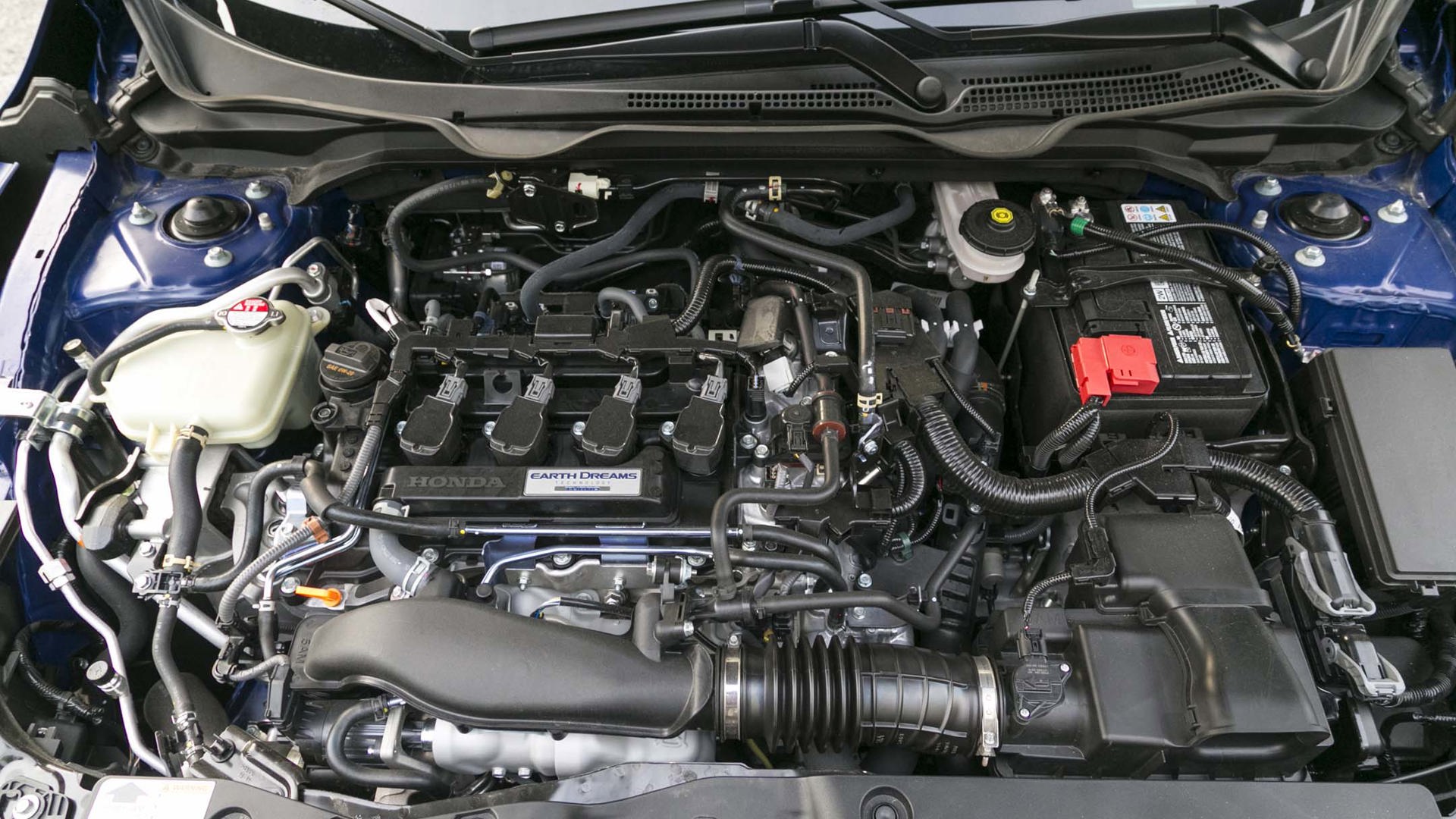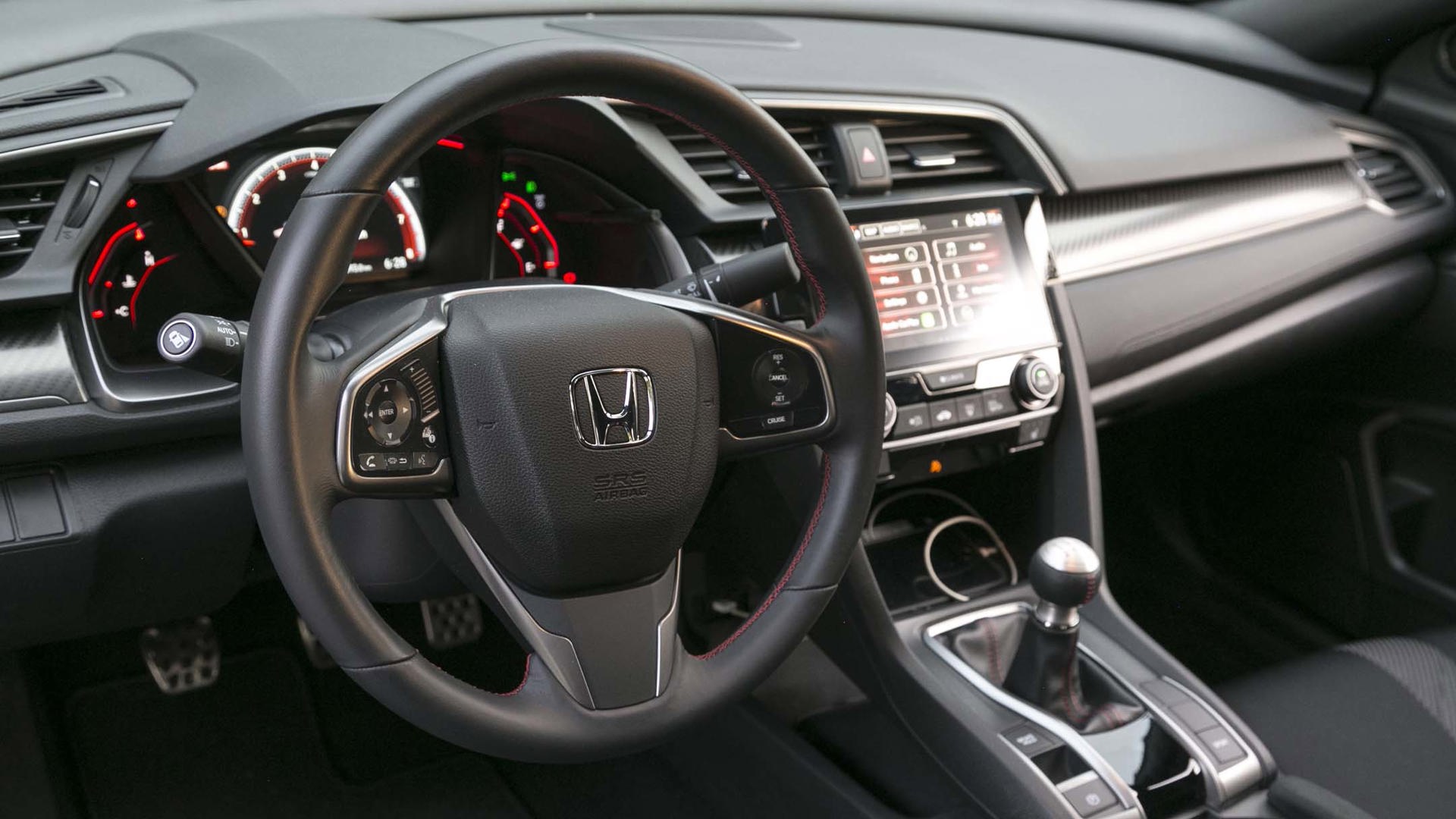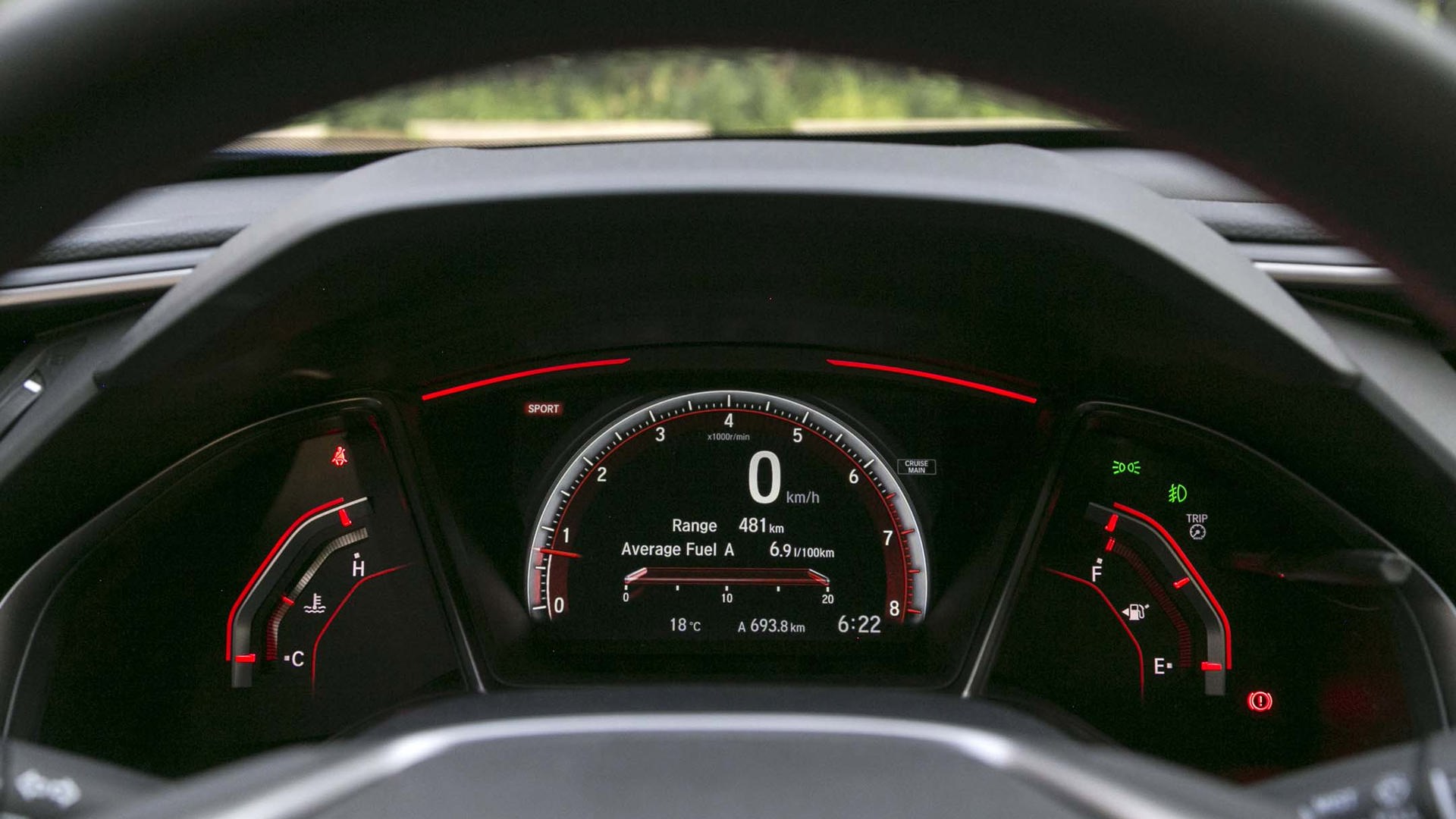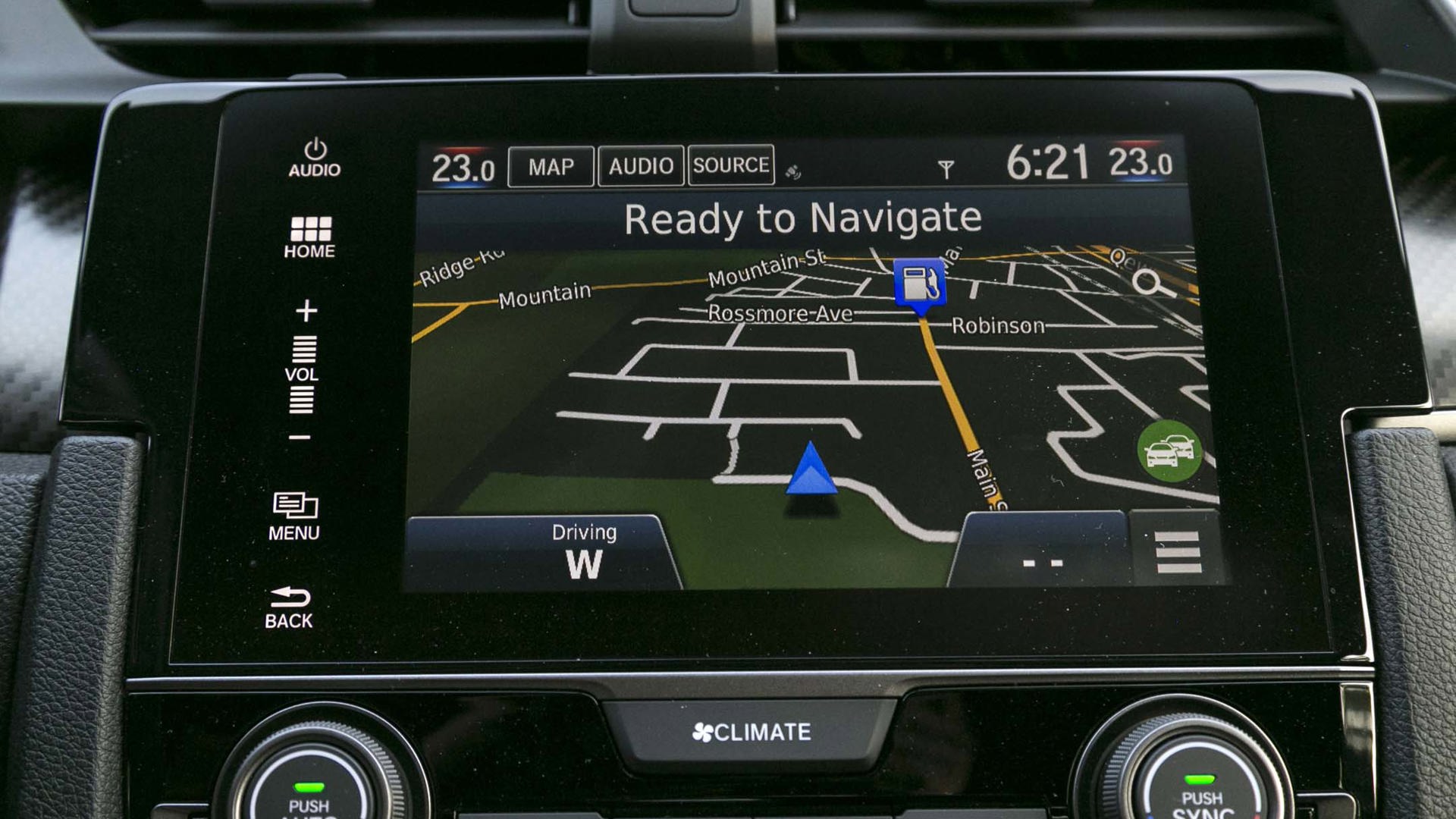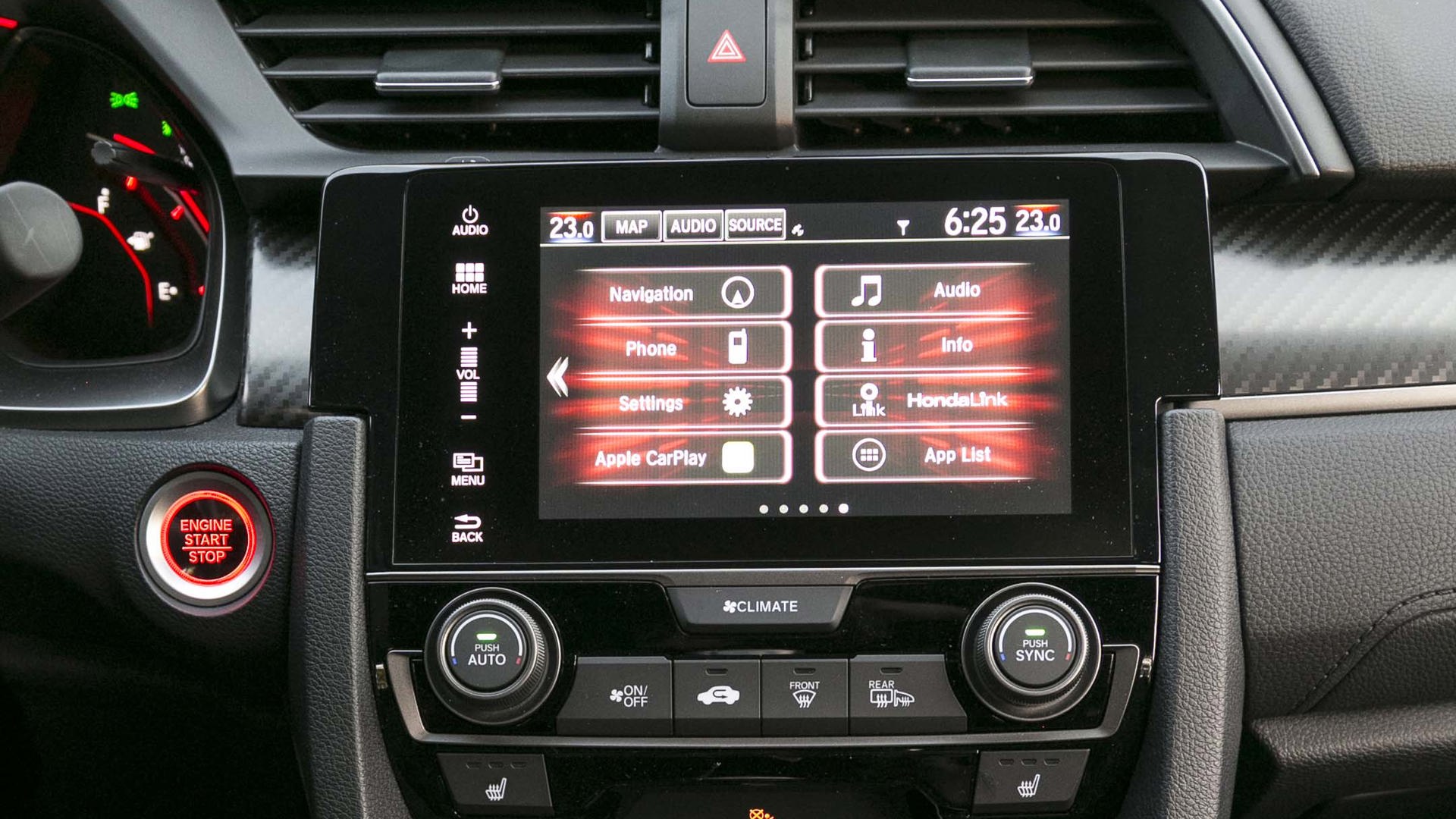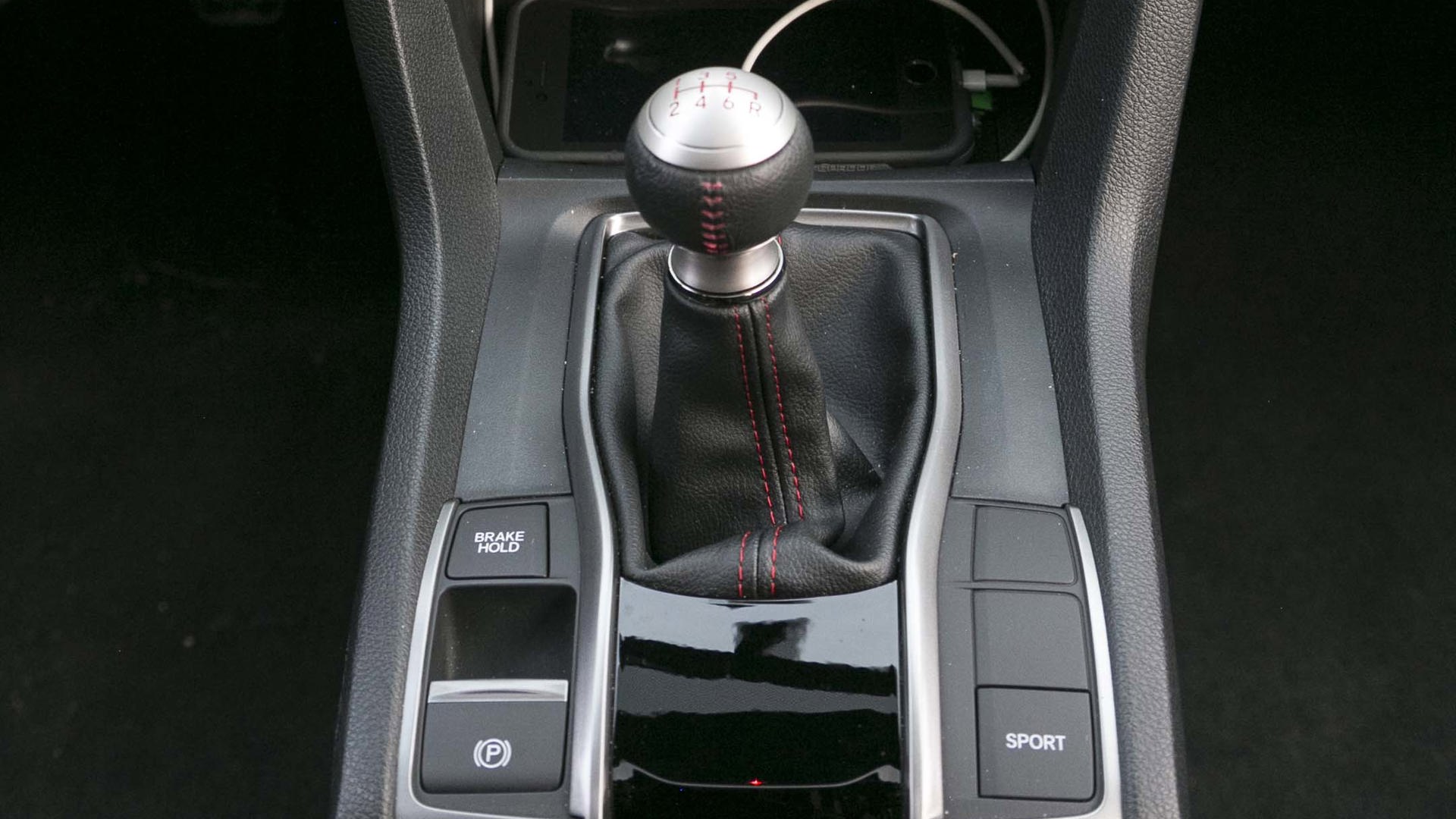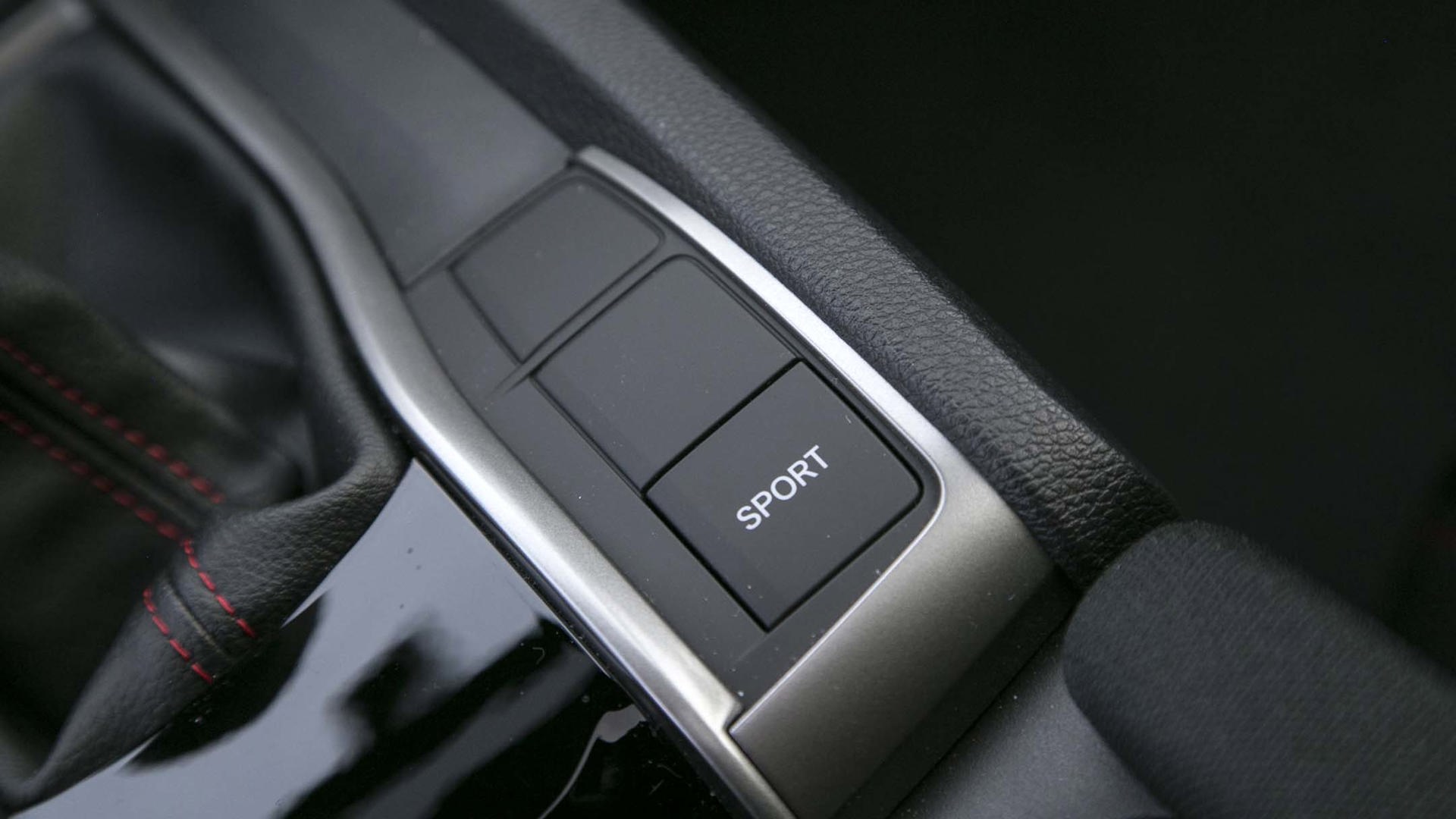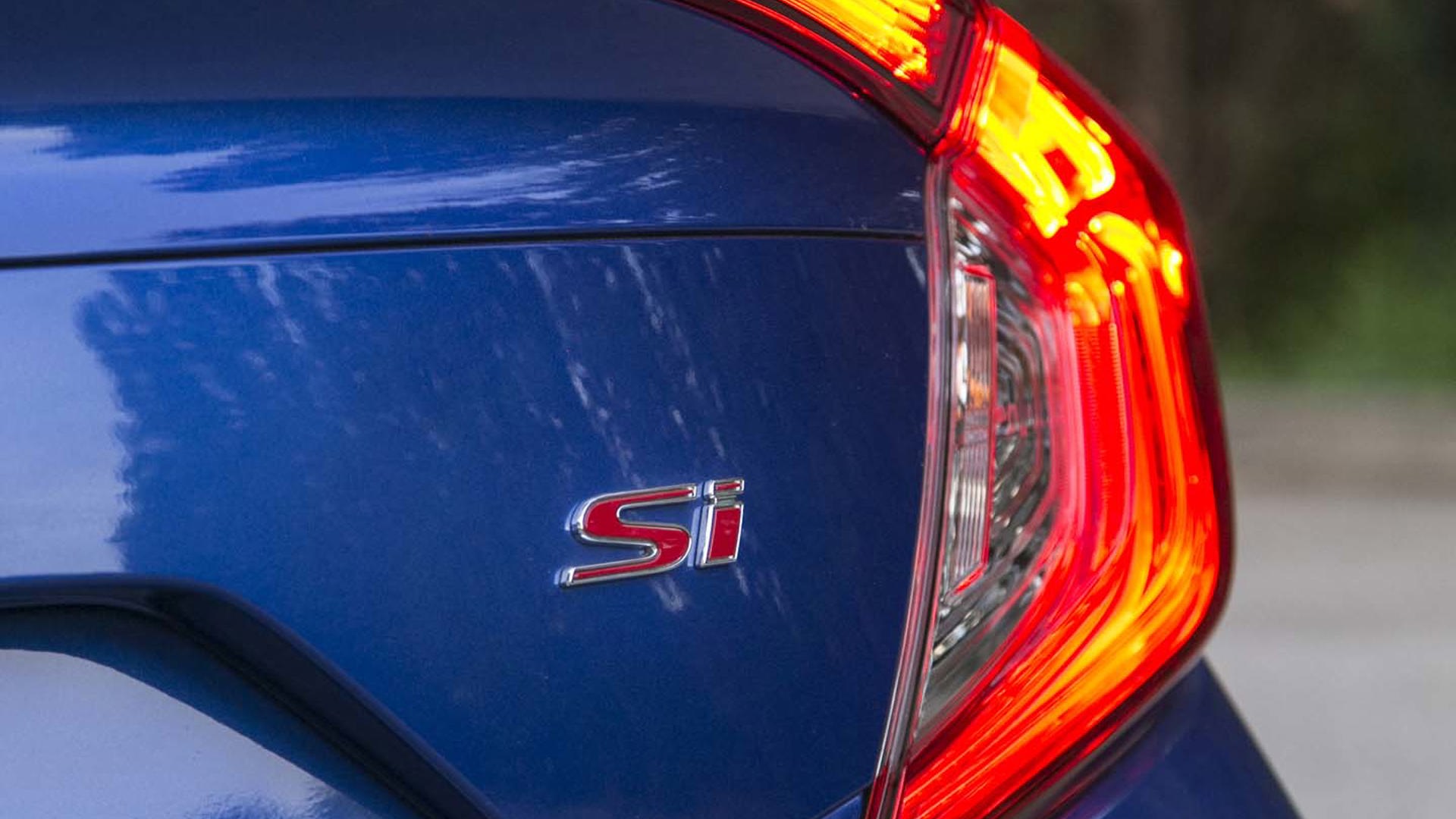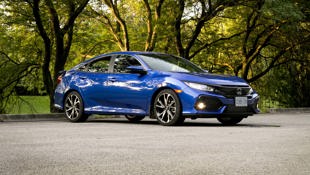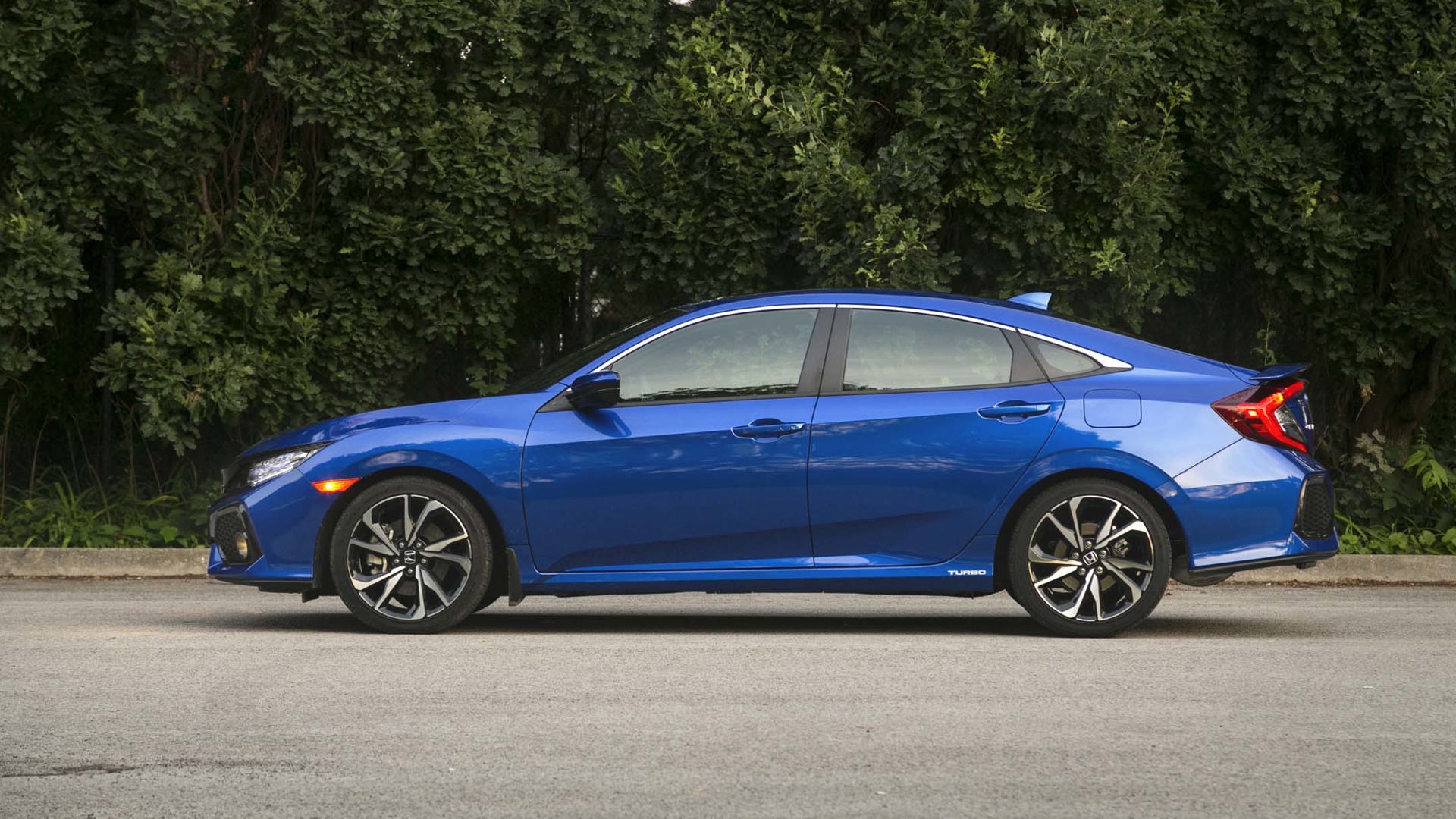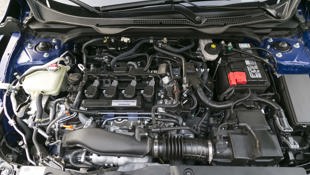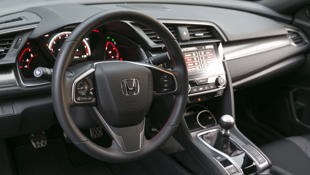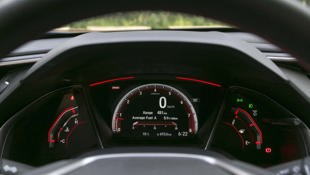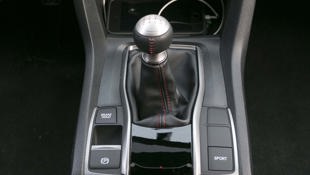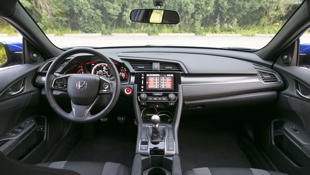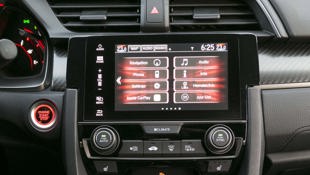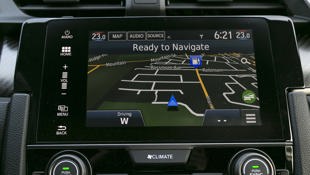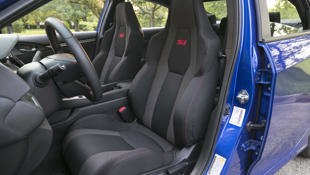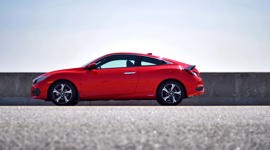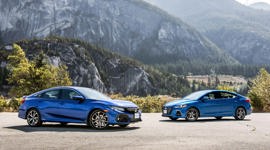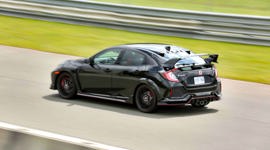 AutoTrader SCORE
AutoTrader SCORE
-
STYLING7/10
-
Safety7/10
-
PRACTICALITY7/10
-
USER-FRIENDLINESS7/10
-
FEATURES7/10
-
POWER7/10
-
COMFORT7/10
-
DRIVING FEEL7/10
-
FUEL ECONOMY8/10
-
VALUE8/10
Honda’s Civic, now in its tenth generation, is an unmitigated success. The automotive media have fallen over themselves to bestow awards, commending Honda on everything from the efficiency to the practicality to the performance of Canada’s perennial bestselling car, and the consumers agree, having shown their approval by opening their wallets to buy in big numbers.
Honda has held true to offering the Civic Si with only a manual transmission, and as it has been for decades, it remains a masterclass of short, precise throws, coupled with a light clutch.
And all that buzz has just been for the common, everyday models.
This year Honda has thrown several jerry can’s worth of gasoline onto the fire by giving North American enthusiasts what we’ve never had before: the lauded 2017 Honda Civic Type R, a sporting machine that has recently claimed the record for being the quickest front-wheel-drive car around the Nürburgring.
Amidst all the excitement, another sporting Civic has started showing up in dealerships. The Honda Civic Si, until this year, was the sportiest variant we got in North America, but has this time seen its launch be dramatically overshadowed by its more aggressive Type R sibling.
Unlike the hatchback-only Type R, the Si is instead available in coupe or sedan format. Given the love shown for Volkswagen’s GTI and Ford’s Focus and Fiesta ST hatchbacks (not to mention the new Elantra GT Sport), this is a bit of a bummer for those who like their sporty cars as practical as possible. Nevertheless, there’s plenty to celebrate here.
From a styling standpoint, this current generation is the best-looking Civic we’ve seen in years. Even in this more pedestrian sedan format, its appearance is properly aggressive. Its profile especially, is long, low and lean with really pleasing proportions. The wheels fill the wells appropriately without looking cartoonish, and Honda’s designers have exercised commendable restraint for not slapping ridiculous wings and ducts and vents all over the Si like the Type R has (though we could do without the giant black plastic fake scoops in the front and rear bumpers). Many Si owners use their cars as all-purpose daily drivers intended to visit clients and take the kids to daycare, so having a car that looks like it has matured beyond its teen years is a good thing.
Visually, the Si differs from less-sporting Civic sedans with subtle badging, a moderate rear spoiler and a wide singular exhaust opening smack-dab in the middle of the lower rear fascia. The 18-inch wheels are unique to the Si as well, fitted with 235-width all-season tires.
Inside the Si, the seats are the most obvious differentiator from other Civics. Here, they’re black cloth with red stitching and Si badge, and there’s aggressive bolstering that hints at the elevated handling capabilities of this car. The back seat is heated (as are the fronts), and it’s still shocking how spacious this once “compact” car’s interior is.
There’s one other interior identifier, too: a “Sport” button on the lower console replaces an “Eco” button. In Sport mode, the Si’s active dampers stiffen up and the throttle response becomes friskier.
The Civic Si definitely performs the duties of a sport sedan, hustling from corner to corner with considerable enthusiasm. The Civic was already a nimble handler – feeling much smaller when driven aggressively than its capacious interior would have you believe – but the Si, predictably, takes it to a higher performance level.
The steering is light and while lacking some of the feel of, say an older Civic, it’s quick and sharp, helping the driver place the car precisely when cornering. Body roll is managed well and the tires offer enough grip that understeer doesn’t become an issue until the Si is pressed to very rapid speeds, or pushed foolishly in tight corners. A helical limited-slip differential helps put the power where it’s best used.
The Si’s brakes provide strong, smooth, and linear braking power too.
Thirty years ago, the Civic Si’s engine was a miniscule 1.5L inline-four cylinder. Today, the brand-new Civic Si’s engine is a miniscule 1.5L inline-four cylinder, despite it being placed in a car that’s more than two-and-a-half feet longer. The key difference now, of course, is three decades of engineering development and technology (and a turbocharger) that have helped the new Si’s engine develop 115 extra horsepower.
Now with 205 hp (or exactly what last year’s 2.4L normally aspirated engine produced), the 2017 model’s engine has a wholly different character than any Si before. Gone is the need to rev the Si to the stratosphere to achieve its thrust. Now, the Civic Si makes great use of its 192 lb-ft of torque; delivering it between 2,100 and 5,000 rpms (or roughly 20 lb-ft more at half the revs of last year).
Coupled with a slightly reduced mass versus the outgoing model, this makes the new Si feel properly energetic in day-to-day driving. It also means the new car is significantly more fuel efficient, with an average combined consumption rate of 7.4 L / 100 km – or a full 2.0 L / 100 km less than last year.
The trouble is, this new 1.5L engine isn’t exactly all-new. It’s the same engine that can be had in any number of “lesser”, more pedestrian Civics, and while it makes those models stand out in the class as being particularly fun and surprisingly energetic to drive, it means the Si model isn’t really all that much more special. Plus, it’s tough to make a tiny car engine like that sound good, and although Honda has tried, it’s still pretty buzzy and unmusical as it revs to redline.
What’s more, some of the American media have tested the new Civic Si, only to find it’s actually a bit slower from zero to 96 km/h thanks to the requirement of an extra shift from second to third gear.
And one other nit to pick: much like the current-generation Subaru WRX, this direct-injection turbo engine seems to suffer from the same affliction of “hanging revs”. When driven with gusto, the revs don’t quickly fall during gear changes, making for shifts that could be a bit smoother.
Despite this hiccup, Honda has held true to offering the Civic Si with only a manual transmission, and as it has been for decades, it remains a masterclass of short, precise throws, coupled with a light clutch. With ever fewer cars being made available with stick shifts these days, companies like Honda who not only offer them – but excel at them – deserve an extra moment’s praise.
The current-generation Civic is loaded up with plenty of safety and technology (though only the CVT-equipped – aka non-Si – models have adaptive cruise control and lane-keeping assist). The Apple CarPlay-/Android Auto-equipped infotainment system comes with a nice big touchscreen and easily operated navigation – nice-to-have stuff on a sub-$30,000 performance car. All in all, it’s a very good system, the lack of volume knob notwithstanding.
The all-new 2017 Civic Si is superior to the machine it replaces, at least on paper and from an engineering standpoint. It conveys its occupants with better comfort and safety, it achieves more torque and better day-to-day drivability, and it offers an impressive improvement in fuel efficiency. For most buyers, this means the new Si better suits their wants and needs, but there will surely be a contingent of past Honda owners who’ll miss the high-rpm antics associated with wild rev-happy VTEC engines of yore.
Honda’s new Civic, across the board, is a fantastic machine that’s well earned all the praise it has received. And while we miss some of the old Si’s unique characteristics, the benefits are significant enough that we’re willing to accept that this is simply the cost of progress.
Besides, if you want more character, the Civic Type R has plenty of it, you’ll just have to spend a lot more to get it.
| Engine Displacement | 1.5L |
|---|---|
| Engine Cylinders | I4 |
| Peak Horsepower | 205 hp |
| Peak Torque | 192 lb-ft |
| Fuel Economy | 8.4/6.2/7.4 L/100 km city/hwy/cmb |
| Cargo Space | 379 L |
| Model Tested | 2017 Honda Civic Si Sedan |
| Base Price | $28,490 |
| A/C Tax | $100 |
| Destination Fee | $1,595 |
| Price as Tested | $30,185 |
|
Optional Equipment
None
|
|
